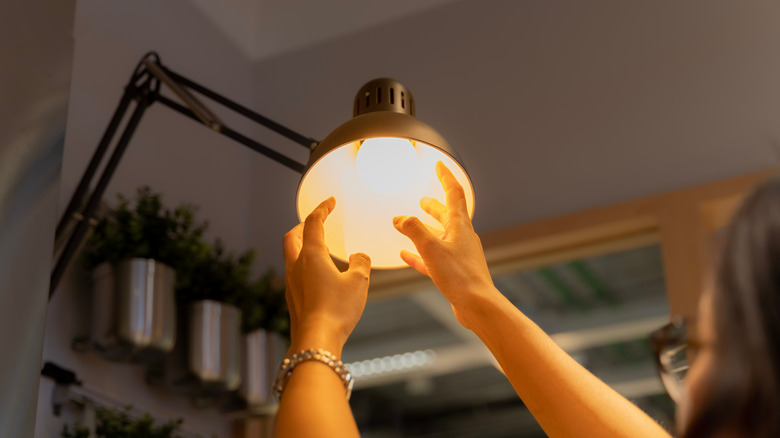
Light bulb technology has made great strides in recent decades, much to the benefit of the average consumer. Not only are they more cost-effective and longer-lasting in most cases than they were previously, but the emergence of LED bulbs brings in less environmental damage — in fact,
LED bulbs can also be recycled and discarded in a more responsible manner.
And on top of that, LED bulbs operate similarly to conventional incandescent ones. Just utilize them whenever needed, and once they stop working, remove them from their socket and substitute with new ones.
You can even safely use LEDs in incandescent or fluorescent fixtures
.
Even though they’re easy to use and come with many advantages, some people might find LEDs somewhat puzzling. When examining LED bulb packages, you might encounter a number listed in Kelvin units without further clarification. This shouldn’t worry you; it’s actually quite straightforward—it indicates the type of white light produced by the bulb—referred to as Correlated Color Temperature. A lower Kelvin value means the light will have a warmer, more yellowish hue, whereas a higher Kelvin figure signifies a cooler, bluish-white appearance. The Kelvin scale spans from 1,000 to 10,000 K, but typical LED bulbs fall between 2,000K and 6,500K.
The Kelvin rating of an LED bulb seems like a pretty innocuous, straightforward bit of information. In reality, it’s important, as it can be quite helpful during the bulb purchasing process.
Read more:
10 Of The Coolest & Most Useful Gadgets You’ll Want For Your Desk At Home Or Work
Which Precise Kelvin Values Are Used for Simulation?

Overall, the importance of an LED’s Kelvin rating comes down to aesthetics. If you’re in the market for a new box of bulbs, but you want to maintain a certain atmosphere in your bedroom, office, or other area, keeping the Kelvin scale in mind is a huge help. This way, you can opt for warm or cool lighting, or somewhere in-between the extremes. Those toward the center of the scale offer a more neutral color, so if visibility is more important than looks, such bulbs could be right for you. Of course, alternatively, with
multi-use, color-changing LED smart lights
,, you have the freedom to choose nearly any desired color temperature.
More precisely, various Kelvin values can mimic different types of lighting. At the lower range—those under 2,000 Kelvin—they resemble the warmth of amber-hued candlelight. The spectrum from 2,000 to 3,000 Kelvin offers a slightly paler appearance with reduced yellowness compared to candlelight. Mid-range lights, spanning from 3,100 to 4,500 Kelvin, produce neutral white illumination ideal for clear visibility. As you move higher, around 4,600 to 6,500 Kelvin, these bulbs emulate natural sunlight effectively. Lastly, lamps above 6,500 Kelvin emit cooler blue tones typically seen in professional environments.
That’s a lot of variation for one bulb type. One can’t help but wonder, though, do different LED Kelvin levels have an impact on brightness or energy use?
Does Kelvin Rating Impact Energy Use?

First and foremost, it should be reiterated that Kelvin measurements in LED bulbs specifically pertain to the color of the light they give off. That’s all, which means that, on a technical level, it doesn’t impact the brightness of the bulb itself directly. It may appear that warmer or cooler bulbs differ in brightness, but in reality, this has nothing to do with Kelvin. Rather, light is measured in lumens, so if you want a specific level of brightness out of a bulb, that’s the measurement you want to look out for. Don’t be confused by the presence of wattage on bulb packaging either, as this is the energy needed for the bulb to operate, not how much light it gives off.
That brings us to the matter of energy use and costs. Seeing the increase or decrease in Kelvin levels from LED to LED might lead one to think they could have different impacts on your finances. As it turns out, this isn’t anything to worry about. Kelvin values don’t directly influence energy use. Not only do you want to look at wattage on this matter instead, but even considering LEDs in general if you haven’t already is for your benefit. According to the
United States Department of Energy
, households using LED bulbs save approximately $225 per year on their energy costs.
When considering LEDs and their features, Kelvin serves as a measure purely for aesthetics. It might be important if you have particular color preferences for your illumination; otherwise, you can safely disregard it altogether if these details aren’t significant to you.
Interested in staying updated with the newest technology and automobile developments?
Sign up for our complimentary email newsletter.
For the most recent news updates, detailed guides from experts, and practical advice delivered right to your inbox once an email.
Read the
original article on Dailyexe
.






